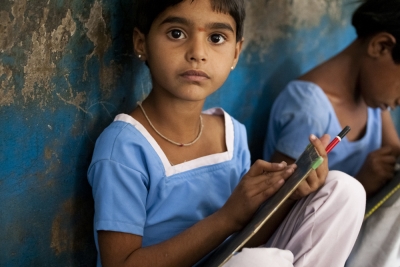
This could be something you’re familiar with. In many educational books, the pictorial representation of a family normally has four people – a mother, a father, a girl, and a boy. Sometimes, it includes a grandmother and a grandfather too. Invariably, the father is shown reading a newspaper or a book, while the mother is in the kitchen or engaged in some domestic chore. At a glance, the depiction appears right; it does seem to reflect reality, after all. It suggests that this arrangement is ideal (and so, perhaps, continue?). Only, it isn’t.
Cleaning, cooking, and taking care of children are some of the most common tasks performed at home globally. Sadly, these are often unpaid work, and overwhelmingly done by women. Further, these works are not considered work at all (see box), and could often be thankless.
Studies have shown that taking on such huge amounts of work, especially without due acknowledgement or appreciation, could lead to physical and mental health issues among women. In many households, even young girls are “taught” to take up domestic responsibilities; the same cannot be said of boys. And so this cycle of gendered domestic labour continues. Domestic work could put an end to the education of many girls, especially those from rural areas or less privileged backgrounds, where either there is a lot of work to be done at home, or parents decide they cannot afford to educate all children, and invariably choose education only for the boys. Equal division of labour among the members of the household would lead not just to a healthier and happier family, but also self-reliant and compassionate individuals.
Such depiction is also worrying at another level it indicates that a family comprises only the binary of male and female, and excludes families that have a single parent, or two fathers, two mothers, or those identifying as other genders.
Benefits of educating a girl child
According to UNICEF, “Investing in girls education transforms communities, countries and the entire world. Girls who receive an education are less likely to marry young and more likely to lead healthy, productive lives. They earn higher incomes, participate in the decisions that most affect them, and build better futures for themselves and their families. Girls education strengthens economies and reduces inequality. It contributes to more stable, resilient societies that give all individuals – including boys and men the opportunity to fulfil their potential.”
A telling painting
This February, the news of a painting created by a Class IX boy from Kerala winning an international competition was shared widely on social media and messaging apps. What was so special about it? It depicted his mother and other mothers in the neighbourhood. More precisely, as Thiruvananthapuram MP Shashi Tharoor tweeted, since the student was tired of hearing that his mother doesn’t work, he painted her doing her various chores”. Bringing to fore the crucial issue of undermining (unpaid) domestic labour and how gendered it is, the painting made it to the cover of Kerala’s Gender Document 2020/21.
Picture Credit : Google



